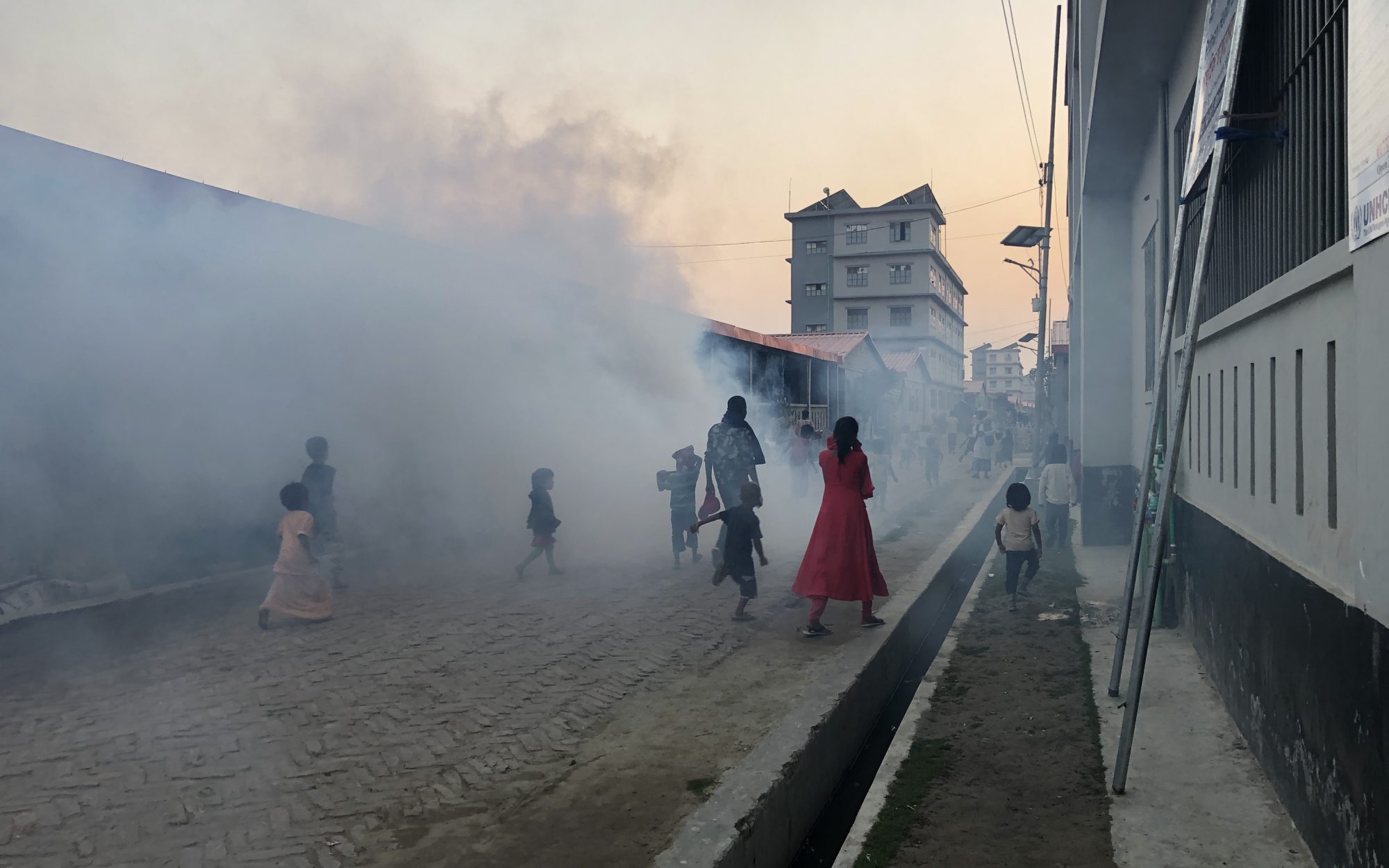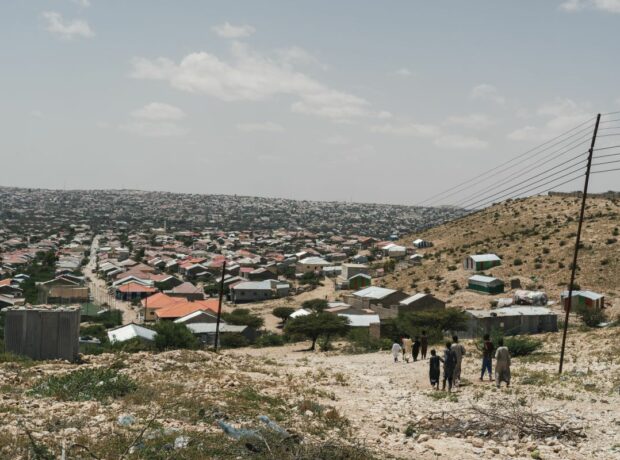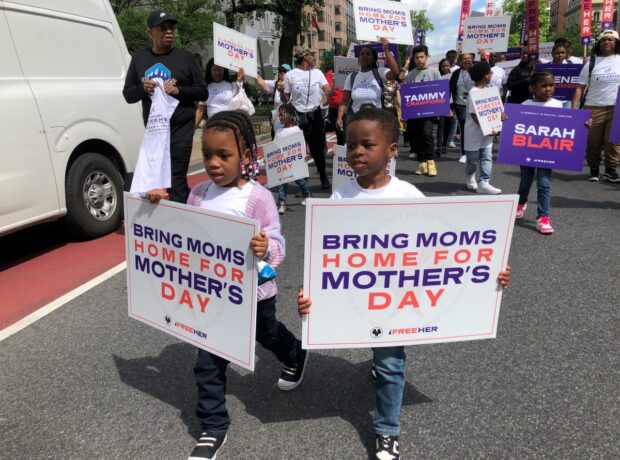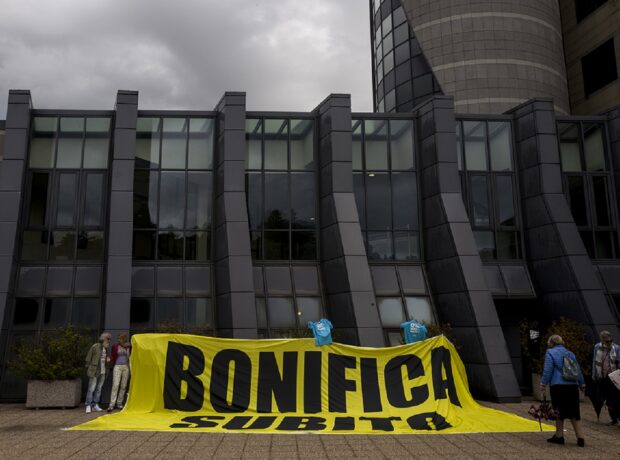The government of Bangladesh plans to move 100,000 Rohingya refugees to the island of Bhasan Char. The plans not only raise questions about freedom of movement, but about the unlawful detention of refugees. Following a visit to Bhasan Char, our authors, two researchers, explore the issues on the island and beyond.
You might believe that Bhasan Char is either a prison or a beacon of hope depending on what you read. Not long ago, after the Bangladesh Government and the United Nations High Commissioner for Refugees (UNHCR) negotiated a memorandum of understanding relating to Bhasan Char, Dr Jeff Crisp, a refugee activist and former UNHCR official, warned that unless the Rohingya refugees were given the right to movement, Bhasan Char could become “a UN-supported prison island”.
Crisp’s concerns about Bhasan Char are not the only criticism against Bangladesh’s efforts to relocate 10% of its Rohingya refugee population from mainland camps to this island in the Bay of Bengal. A report published by Human Rights Watch in 2021 quoted a Rohingya child living on Bhasan Char who described it as “an island jail in the middle of the sea”.
But this idea of a “prison island” sits in sharp contrast with the picture of Bhasan Char painted by the media in Bangladesh. Speaking to the Dhaka Tribune, Bangladeshi Foreign Minister AK Abdul Momen described Bhasan Char as a “chomotkar jayga” (excellent place) where a resort could also be built.
Similar sentiments were echoed by the Armed Forces Division of the Prime Minister’s Office when it described camps in Bhasan Char as “one of the finest […] in the globe for the displaced nationals”.
And then, of course, there was the endearing image of Shohel, a 10-year-old Rohingya boy carrying his pet dog Moti while being relocated to Bhasan Char with his family.
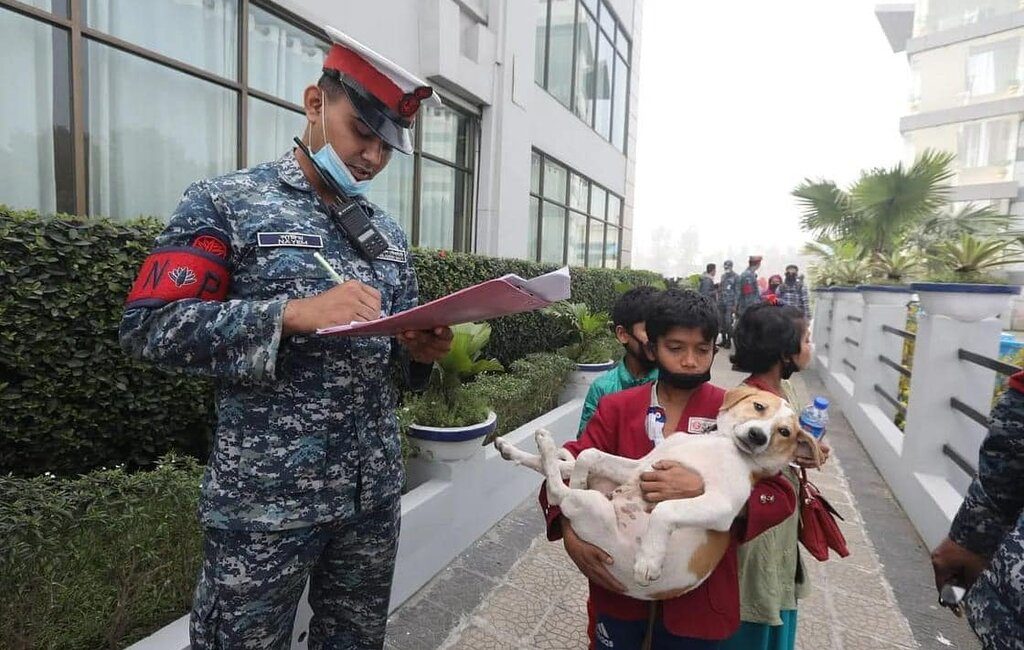
10-year old Rohingya boy, Shohel carrying his pet dog while boarding the ship to go to Bhashan Char on Tuesday, February 16, 2021
How can one and the same island be described in such polar opposite ways? And if Bangladesh forges ahead with this decision to relocate Rohingya refugees to this small island, how can it guarantee their freedom of movement?
What is Bhasan Char?
Bhasan Char (previously known as Thengar Char) is a small island in the Bay of Bengal.
Reaching about 8km (5 miles) wide and covering 40 square kilometres (15 square miles), it’s smaller than Guernsey or Catalina Island. Parts of the Chattogram division, Noakhali and the Patenga sea beach on the mainland are 39km (21 nautical miles) and 51km (28 nautical miles) away.
This little island is currently home to some 29,116 Rohingya refugees. The Bangladesh Government aims to relocate a total of 100,000 to Bhasan Char in the near future. According to a BBC report, the island, made entirely of Himalayan silt sediment, emerged from the sea less than 20 years ago and now stands less than 2m (6ft) above sea level. Like other coastal regions of Bangladesh, the island is known for its vulnerabilities to cyclones and its lowlands are submerged under a meter of water at high tide.
Why is Bangladesh moving Rohingya refugees to Bhasan Char?
More than one million Rohingya refugees are now living in crowded camps scattered across south-eastern Bangladesh. Under military rule in Myanmar, the Rohingya were subject to marginalisation, exclusion and violence for decades. As previously reported, a law imposed in 1982 left the Rohingya unrecognised as one of the country’s 135 ethnic groups, effectively stripping them of citizenship. A two-child policy was introduced shortly after and Rohingya couples required permission to be able to marry. Access to state schools, public health services and freedom of movement was – and still is – forbidden.
The violence and discrimination escalated in 2012 with riots and mass displacement that saw hundreds of thousands flee to Bangladesh or Southeast Asia by boat. A further crescent of violence in 2015 increased the retreat from Rakhine, and even after Nobel Peace Prize winner Aung San Suu Kyi came to be the de-facto head of government in 2016, violence continued.
The UN’s High Commissioner for Human Rights has described more than a million Rohingya people trapped in refugee camps as “the world’s biggest refugee crisis” and “a textbook example of ethnic cleansing.”
The Bangladesh Government first floated the idea of using Bhasan Char as a home for Rohingya refugees in 2015 when it proposed relocating around 32,000 Rohingya with “refugee status”. The move came in response to the perception that the Rohingya were “hampering tourism in the coastal resort district”. At the time, the UNHCR said the move would be “logistically challenging”.
Then, two years later, in what was widely labelled one of the greatest humanitarian crises of our time, refugees were forced to flee to Bangladesh in great numbers after the Myanmar Army’s ruthless onslaught on the Rohingya in August 2017. The Bhasan Char relocation plans picked up speed.
As new campsites began to form in Bangladesh, forests were cleared. A study from 2018 found that more than 2,000 hectares of forest were lost in Kutupalong and surrounding areas. The region became more vulnerable to landslides and tensions began to simmer between Rohingya refugees and members of the local community as they all relied on forests for fuel, food and medicine.
The 34 camps that are now home to nearly a million Rohingya people are congested and overcrowded, leading the Bangladesh Government to see Bhasan Char as a solution.
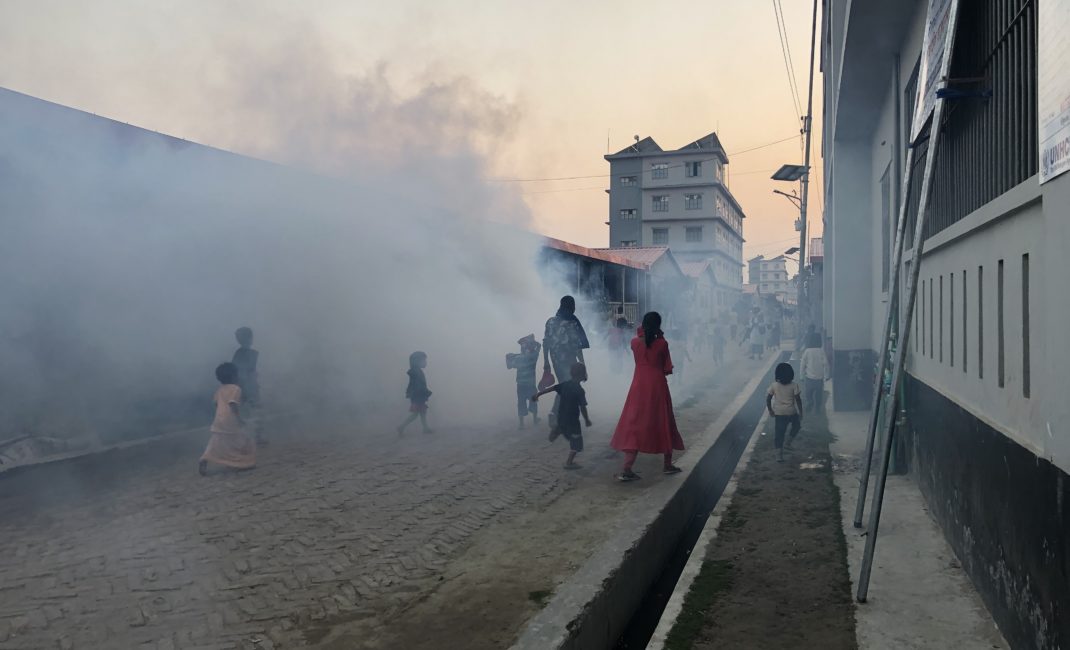
The fumes of mosquito repellent in Bhasan Char – by M Sanjeeb Hossain.
The evolving struggle to ensure the security of the Rohingya people was also a factor in the Bangladesh Government pushing for relocations. For instance, Rohingya refugees from the Christian faith, described as “a persecuted minority within a persecuted minority” at risk from Arakan Rohingya Salvation Army (ARSA) militants, were among the first to be resettled on Bhasan Char.
In 2017, Bangladesh’s Executive Committee of the National Economic Council (ECNEC) approved ‘Ashrayan-3’, the latest stage in the Sheikh Hasina-led Ashrayan Project. “Ashrayan” is Bengali for “shelter” and, since 1997, this project has built homes for more than 300,000 families affected by climate-induced disasters in Cox’s Bazar and the neighbouring regions along Bangladesh’s south-eastern coast. Ashrayan-3 would create temporary housing for 100,000 Rohingya refugees on Bhasan Char.
When relocations began in December 2020, the Bangladesh Government claimed it had not involved UN agencies because of their “negative campaign, unrealistic conditions and static position” relating to Bhasan Char.
In the not-too-distant future, the Bangladesh Government intends to relocate another 70,000 Rohingya to Bhasan Char. But unlike the initial relocations, the UNHCR is now directly involved through the previously mentioned Memorandum of Understanding (MoU) negotiated with the Bangladesh Government late last year.
What do critics say about Bhasan Char?
The concerns of the international community, including UN agencies and human rights organisations, tend to revolve around the extent to which relocations of Rohingya refugees have been genuinely voluntary, the vulnerabilities of Bhasan Char to extreme weather, and restrictions imposed on the right to movement of the Rohingya people.
Filippo Grandi, the UN High Commissioner for Refugees, expressed concerns after about 1,600 Rohingya refugees were relocated from mainland camps to Bhasan Char in December 2020. Grandi called for access to the Rohingya by the UNHCR and UN partners, to allow them to “hear their voices, understand their wishes and see conditions on the island”, insisting that “transfers must follow a voluntary, informed decision.”

The banner in the distance reads “Forward Base Bhasan Char, Bangladesh Navy” – by M Sanjeeb Hossain.
There are also fears that the island remains vulnerable to severe weather, particularly cyclones. A recent report by Human Rights Watch highlighted “serious concerns that Bhasan Char is not safe for settlement”. While the embankment on Bhasan Char is now being enhanced to 19ft in response to concerns expressed by the international community, the island will essentially be “cut off from the rest of the world” during severe weather.
But perhaps the most alarming aspect regarding Bhasan Char is the limited right to movement enforced upon its Rohingya residents, triggering some to desperately attempt to escape from the island.
Local newspapers are littered with reports about Rohingya people who have fled or attempted to flee Bhasan Char. In one such escape attempt a boat carrying 42 Rohingya refugees fleeing from Bhasan Char capsized in the Bay of Bengal in August 2021, leaving many dead.
So, as the Bangladesh Government and UNHCR prepare to relocate another 70,000 Rohingya people to Bhasan Char in the near future, ensuring the right to movement of these individuals is paramount.
Does Bhasan Char restrict the right to freedom of movement of the Rohingya people?
The right to freedom of movement, an indispensable human right, came to the fore in modern international law through the Universal Declaration of Human Rights (UDHR) and the International Covenant on Civil and Political Rights (ICCPR), following an “intellectual lineage linked to the concept of ‘liberty’.” Refugee camps in Bangladesh – and elsewhere around the world – typically operate with restrictions on freedom of movement. States often develop camp “confinement policies”, prohibiting refugees from leaving the camps.
Those found outside the camps may be prosecuted for, among other violations, illegal stay, entry, or vagrancy. The key question in all cases is whether these restrictions are in accordance with international and domestic law or whether the restrictions are arbitrary. So, what is the answer in the case of Bhasan Char?
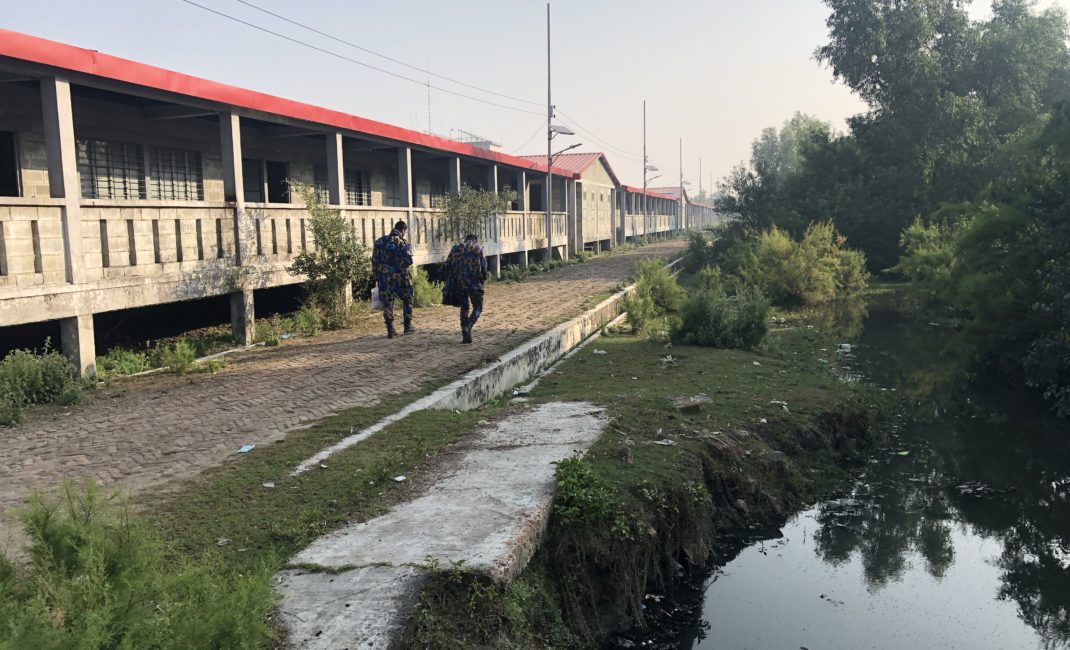
Two members of Armed Police Battalion (APBN), a unit of the Bangladesh Police responsible for ensuring security on the island – by M Sanjeeb Hossain.
The agreement between the Government of Bangladesh (GOB) and the UNHCR states that the government will allow refugees or “forcibly displaced Myanmar nationals (FDMN) “to move on and within Bhasan Char for their daily activities”, but it does not explicitly guarantee a general right to movement.
While seeking to ensure relocation to the island only on a voluntary basis, the “precise modalities and arrangements for movements of refugees/FDMNs from and to Bhasan Char on a needs basis will be agreed between the GOB authorities and the UN”.
While some restrictions on freedom of movement are permitted, the arbitrary and (often) discriminatory restrictions of movement are inconsistent with international human rights law. Article 12 of the ICCPR provides that “everyone lawfully within the territory of a state shall, within that territory, have the right to liberty of movement and freedom to choose his residence.”
This right to freedom of movement can only be restricted legally if “necessary to protect national security, public order, public health, or morals, or the rights and freedoms of others.” The UN Human Rights Committee has also recognized that the ICCPR must apply “without discrimination between citizens and aliens.”
While the Bangladesh Constitution recognises the freedom of movement as a fundamental right available to all citizens “subject to any reasonable restrictions”, it ratified the ICCPR in 2000 and did not express any reservations or declarations about the rights to freedom of movement.
While there may be debates over whether the majority of Rohingya refugees are lawfully residing in Bangladesh, the fact is they fled Myanmar because they were forced to.
National governments have considerable discretion as to what constitutes a threat to national security, and the maintenance of security is often an important motivating factor in the use of refugee camps and the promotion of encampment policies.
States make entry into their territory conditional on encampment as a means to control stability. The most common justification for the confinement of refugees in camps is usually host states’ reference to national security concerns, along with a lack of adequate resources.
But, since the threshold set by the International Covenant on Civil and Political Rights is high, the threat to the state must be serious to invoke national security concerns when justifying encampment.
And while camp confinement policies are not necessarily the same as arbitrary detention, encampment may often be analogous to arbitrary detention. So, closed refugee camps like Bhasan Char may operate as de facto places of detention.
The ICCPR states: “Everyone has the right to liberty and security of person. No one shall be subjected to arbitrary arrest or detention. No one shall be deprived of his liberty except on such grounds and in accordance with such procedures as are established by law.”
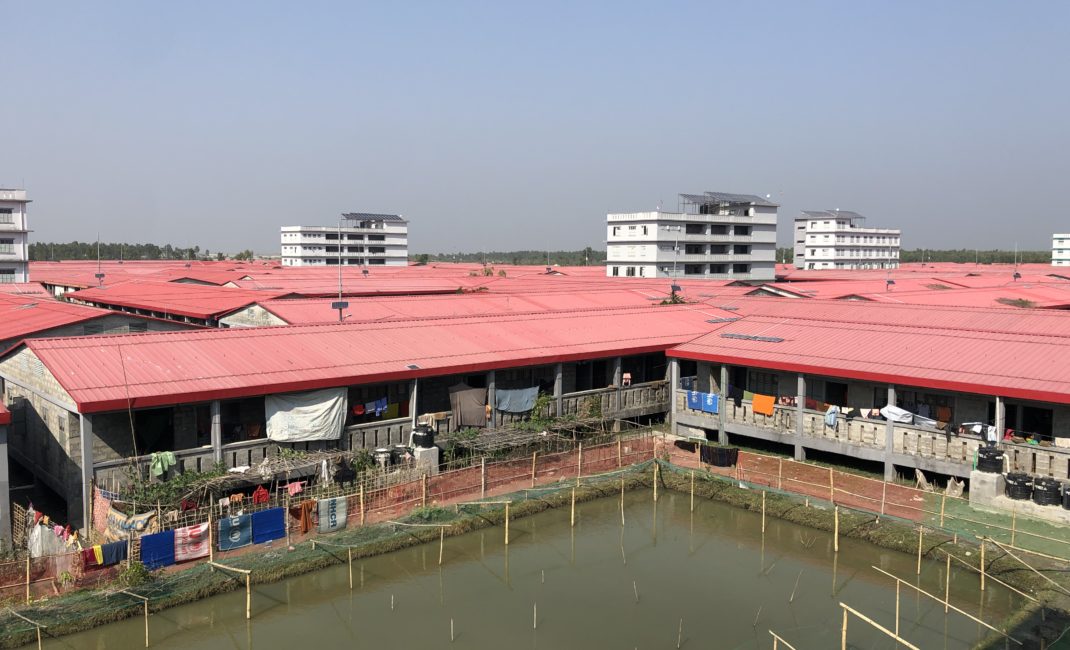
Red rooves top the homes of Rohingya refugees on Bhasan Char – M Sanjeeb Hossain.
For detention to be lawful, some basis in law must exist for ordering it. It must be made for a legitimate purpose; there must be no lesser means available to achieve the objective justifying detention; and, perhaps most important, it must be of limited duration and applied in a non-discriminatory manner.
The UN Human Rights Committee has specified that arbitrary detention arises not only when there is no law allowing for it but also when there are elements of inappropriateness, injustice, lack of predictability, or disregard for due process of law.
Can Rohingya people freely leave Bhasan Char? And can others freely visit?
Right now, the Bangladesh Government’s policy on responding to Rohingya people fleeing from Bhasan Char remains unclear. On some occasions, Rohingya trying to escape from the island were detained and charged under the Foreigners Act 1946. In other instances, they were returned to Bhasan Char.
The legitimacy of the Bangladesh Government’s decision to relocate 100,000 Rohingya refugees to Bhasan Char arguably depends on ensuring that they have freedom of movement. Unless the Rohingya living in Bhasan Char are allowed to travel to the mainland, they are in effect imprisoned on the island.
This sense of imprisonment, among other reasons, has resulted in attempts by the Rohingya to escape. Despondency was clear in the words of a Rohingya refugee interviewed in January 2021 in Ukhiya, Bangladesh, who said: “We have hope. We feel that one day we will be able to return to Myanmar. If we look across the border, we can see our land. But if we move to Bhasan Char, it feels like we are moving further away from our country.”
In recent months, the Rohingya residents of Bhasan Char have been allowed to visit their relatives in mainland camps and receive guests on the island. This shift in policy marks an important acknowledgement by the Bangladesh Government of the importance of the right to freedom of movement.
But do these permitted visits satisfy the right to freedom of movement? This depends on how easy visits are to access and how frequently they are permitted.
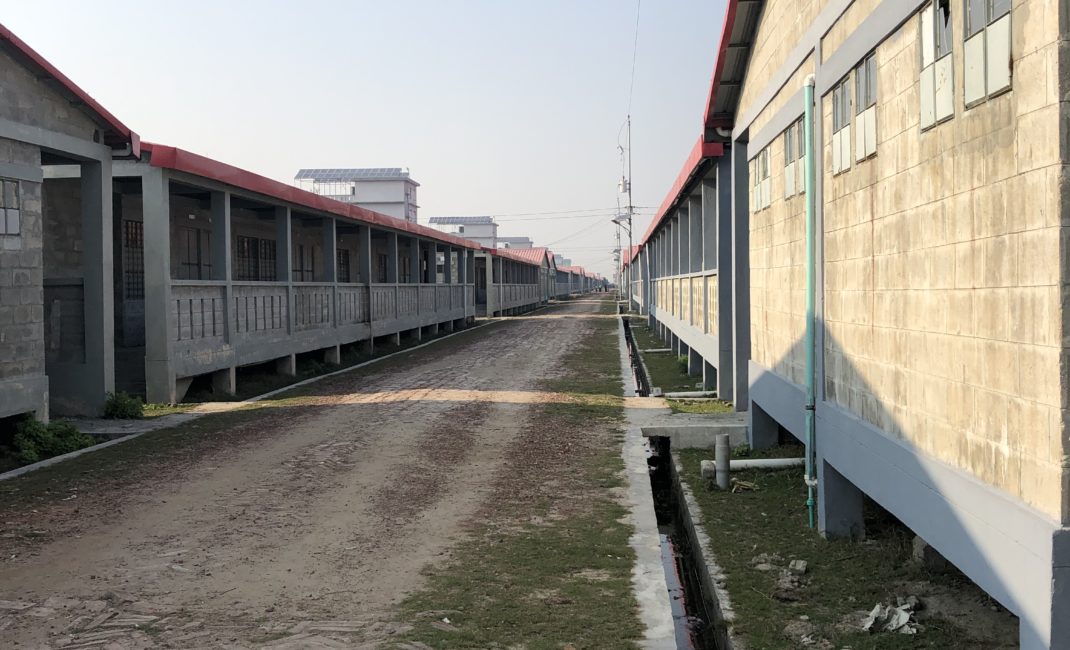
With Rohingya refugees living in only 30% of the homes built for them, most of Bhasan Char remains unoccupied – M Sanjeeb Hossain.
A Rohingya refugee interviewed in Bhasan Char in February 2022, told us that applying to visit the mainland often requires paying a small bribe to the local Majhi (Rohingya community leader), who places the application before the Office of the Refugee Relief and Repatriation Commissioner (RRRC) in Bhasan Char. Many can’t afford to pay the bribe.
What next for the refugees of Bhasan Char?
Bangladesh has generally upheld the principle of non-refoulement and continues to make itself available to the Rohingya people as a refuge from their homeland in Myanmar. And for that, it deserves praise.
But the goodwill that Bangladesh has earned may well be compromised unless it ensures freedom of movement to each person relocated to Bhasan Char. This issue has not only been raised internationally, but was flagged early on by a local Bangladeshi NGO when the idea of relocating Rohingya refugees to Bhasan Char was being seriously considered. So, it’s unlikely that the Bangladesh Government is unaware of this problem.
Traditionally, the word “bhasan” relates to “floating” and “char” means a small island. Intriguingly, late Chief Justice Muhammad Habibur Rahman in his book Jothashobdo wrote that bhasan also signifies “giving up” or, in other words, renouncing or sacrificing oneself.
Ensuring freedom of movement could keep the Rohingya people on Bhasan Char “afloat” until they can return to Myanmar. But without this freedom, is it really a stretch to argue that in trying to tackle the challenge of densely populated camps on the mainland, the Bangladesh Government is sacrificing Rohingya refugees?
Read more:
- 7 stories following the journey of the Rohingya refugees
- The Jungle, Calais: “The best and worst of humanity in one place”
- An open letter to the Desi community on colourism and anti-Blackness
The research this story is based on was supported by the ASILE project, which received funding from the EU Horizon 2020 programme for research and innovation under grant agreement nº 870787. The authors acknowledge the support of the Centre for Peace and Justice (CPJ), BRAC University, for facilitating M Sanjeeb Hossain’s visit to Bhasan Char from February 13-16, 2022, as part of a CPJ Team.
Main image by M Sanjeeb Hossain.
